The Complete Guide to Dog Training at Home
Transparency matters to us! This post may include affiliate links, which means we earn a small commission if you make a purchase through our recommendations. This is at no additional cost to you. Read our full affiliate disclosure.
Your adorable new puppy seemed perfect at the pet store, but after just three days at home, you’re wondering if you accidentally adopted a furry tornado. Chewed shoes, mysterious puddles, and sleepless nights have you questioning every decision. The good news is that effective dog training at home can transform even the most challenging puppy into a well-behaved companion through consistent, positive methods that work within your daily routine. Research shows that even brief, structured training sessions at home can improve both dog behavior and owner confidence, creating lasting bonds built on trust and clear communication. Whether you’re dealing with a bouncing puppy or an older dog learning new habits, the right approach makes training an enjoyable experience that strengthens your relationship. Success comes from understanding how your dog learns, setting up your environment for wins, and maintaining patience as you both grow together. Your home can become the perfect classroom for building the respectful, joyful partnership you’ve always wanted with your four-legged family member.
Key Takeaways
- Positive Reinforcement Accelerates Learning: Reward-based methods build trust while teaching faster than punishment approaches, creating cooperative relationships instead of fearful compliance
- Consistency Creates Clarity: Same commands, rules, and timing from all family members prevent confusion and help dogs understand expectations quickly
- Short Sessions Maximize Focus: 5-10 minute training periods maintain attention and prevent overwhelm for both dog and owner while building skills gradually
- Environment Shapes Success: Puppy-proofing and structured spaces prevent mistakes while encouraging good habits through thoughtful management and setup
- Immediate Feedback Works: Rewards delivered within seconds create clear communication and strengthen the connection between action and consequence
- Mental Stimulation Prevents Problems: Engaging a dog’s mind through training reduces destructive behaviors and builds confidence in both partners
Understanding Your Dog’s Learning Process
Dogs learn through association, repetition, and immediate feedback, making your home the perfect environment for building new skills when you understand their natural learning patterns. Unlike humans, dogs live in the moment and form connections between actions and consequences within seconds, which means timing becomes everything in successful training. Canine psychology shows that dogs respond best to clear, consistent signals that help them predict what you want and earn rewards for making good choices. When you align your training methods with how dogs naturally process information, you create faster learning and stronger communication that makes every session more effective.
Reading Your Dog’s Body Language and Signals
Understanding what your dog is trying to tell you through body language can dramatically improve your training timing and success rate. A relaxed dog with soft eyes and loose body posture is ready to learn, while a dog showing stress signals like panting, pacing, or avoiding eye contact may need a break or different approach. Learning to interpret canine communication helps prevent miscommunication and builds trust between you and your dog during training sessions. Watch for signs of engagement like focused attention, eager body language, and willingness to interact, which indicate your dog is in the right mindset for learning new skills.
Creating the Right Mindset and Environment
Approaching dog training with realistic expectations and patience while setting up your physical space for success creates the foundation where good behavior naturally develops. Your mindset directly affects your dog’s learning experience, as dogs can sense frustration, anxiety, or impatience, which can slow progress and damage the trust you’re building together. Dogs thrive when their environment supports good choices and prevents common mistakes that lead to confusion or setbacks. The combination of mental preparation and physical setup removes many obstacles that typically derail training efforts, allowing you to focus on positive reinforcement and skill building.
Puppy-Proofing and Structured Spaces
Smart environmental management prevents problems before they start by removing temptations and creating clear boundaries that guide your dog toward success. Baby gates, exercise pens, and designated areas help you supervise effectively while giving your dog appropriate spaces to rest, play, and practice new skills. Using crates, gates, and structured areas prevents mistakes when unsupervised and reduces the chance for bad habits to form during the learning process. Strategic placement of toys, beds, and water bowls in appropriate areas teaches your dog where different activities belong while keeping valuable or dangerous items safely out of reach.
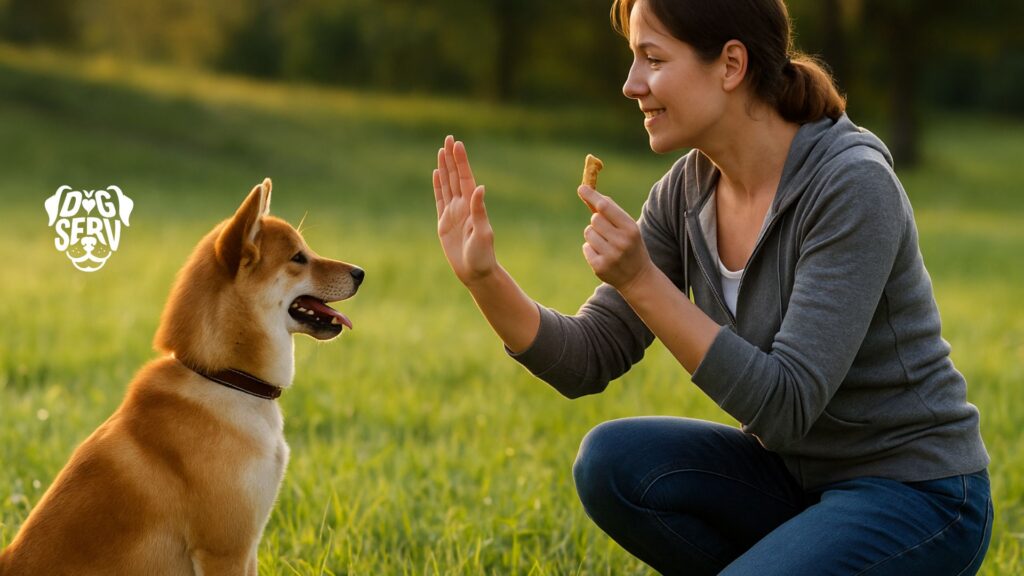
Positive Reinforcement Training Methods
Reward-based training approaches work with your dog’s natural desire to please and earn good things, creating enthusiastic learners who actively seek ways to make you happy. Positive reinforcement methods are more effective and less stressful than punishment-based techniques, building confidence while teaching new behaviors through treats, praise, toys, and life rewards like walks or playtime. The science behind positive training shows that dogs learn faster and retain information longer when training feels like a fun game rather than a stressful test. This approach strengthens your bond while developing reliable responses to commands, as dogs become eager partners in the training process rather than reluctant participants trying to avoid corrections.
High-Value Rewards and Timing Techniques
Identifying what truly motivates your specific dog and delivering those rewards with precise timing creates the clear communication that accelerates learning. Some dogs are motivated by food, others by play or attention, so experimenting with different reward types helps you find the most effective motivators for training sessions. High-value treats like small pieces of chicken, cheese, or special training treats work best for teaching new commands, while praise and petting can maintain already-learned behaviors during daily life. Delivering rewards within seconds of the desired behavior strengthens the connection between action and consequence, helping your dog understand exactly what earned the good outcome.
Establishing Consistency and Routine
Dogs thrive on predictable patterns and clear expectations that help them understand their role in the household and what behaviors earn positive attention. Mixed messages from different family members create confusion and slow learning progress, while consistent approaches from everyone accelerate skill development and create reliable responses to commands. Establishing regular feeding times, potty breaks, training sessions, and exercise periods gives your dog structure that reduces anxiety and supports good decision-making throughout the day. When rules and expectations remain the same regardless of which family member is present, dogs can focus on learning rather than trying to figure out constantly changing requirements.
Family Training Alignment and Communication
Getting everyone in your household using the same commands, hand signals, and expectations prevents the confusion that often sabotages training efforts. Consistency in cues, rewards, and routines from all family members helps dogs learn faster by eliminating mixed signals that slow progress. Hold a family meeting to establish which words you’ll use for each command, how you’ll handle corrections, and what behaviors are acceptable or unacceptable in different areas of the home. Create a simple reference sheet with agreed-upon commands and rules that everyone can follow, ensuring your dog receives the same clear message from every person they interact with daily.
Teaching Foundation Commands at Home
Essential commands like sit, down, stay, come, leave it, and drop it form the building blocks that make all other training possible while keeping your dog safe in daily situations. These foundation skills create the communication system you’ll use throughout your dog’s life, from basic manners to complex behaviors that enhance your relationship. Breaking behaviors into smaller steps and rewarding incremental progress helps dogs understand what you want while building confidence through achievable successes. Starting with these fundamental commands in your familiar home environment allows you to establish reliable responses before adding the distractions and challenges of the outside world.
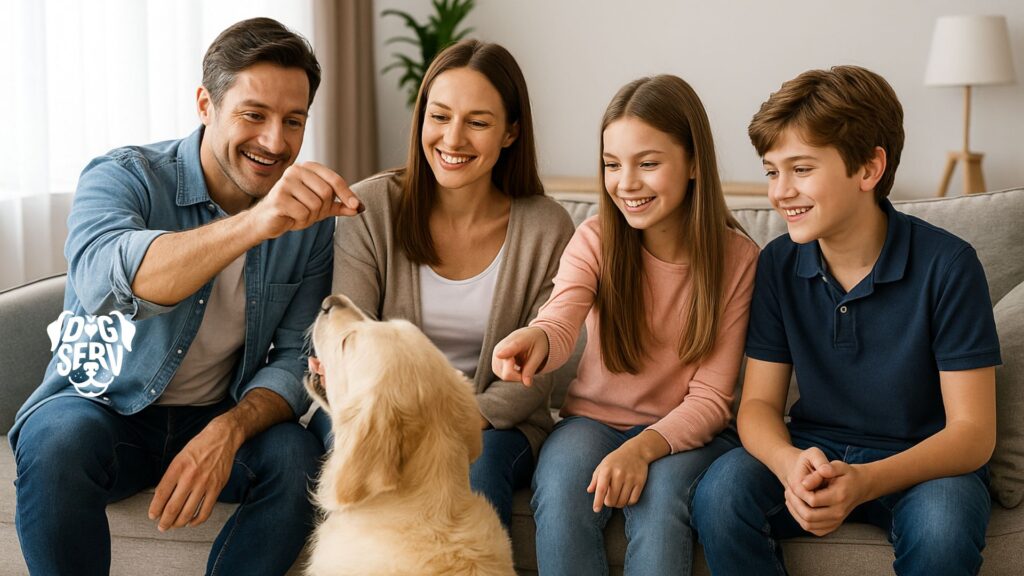
Step-by-Step Command Training
Begin each new command by getting your dog’s attention with a high-value treat, then use clear, consistent verbal cues paired with gentle physical guidance if needed. For “sit,” hold a treat close to your dog’s nose, slowly lift it over their head, and say “sit” as their bottom naturally touches the ground, immediately rewarding with the treat and praise. Give commands once, wait for the response, and reward success rather than repeating the word multiple times, which teaches dogs they can ignore initial requests. Practice each command in short sessions throughout the day, gradually increasing the time between command and reward as your dog becomes more reliable, then slowly add mild distractions to build stronger responses.
Housebreaking and Bathroom Training
Establishing reliable bathroom habits requires consistent schedules, careful supervision, and positive reinforcement for successful outdoor elimination rather than punishment for accidents. Most dogs show noticeable improvement in house training within 1-2 weeks when owners maintain consistent routines and reward outdoor success enthusiastically. The key to faster housebreaking lies in preventing accidents through frequent outdoor trips while building strong positive associations with eliminating in appropriate areas. Understanding your dog’s natural bathroom schedule and recognizing early signals helps you provide opportunities for success while reducing indoor mistakes that slow the learning process.
Creating Successful Potty Routines
Establish regular bathroom breaks first thing in the morning, after meals, after naps, during play sessions, and last thing before bed to match your dog’s natural elimination patterns. Watch for circling, sniffing, or heading toward the door as signals that your dog needs to go outside, and respond immediately to reinforce the connection between these behaviors and outdoor trips. Clean accidents thoroughly without punishment while increasing supervision and providing more frequent outdoor opportunities to prevent future mistakes. When your dog eliminates outside, offer immediate praise and high-value treats to create strong positive associations with choosing the right location for bathroom needs.
Crate Training for Security and Structure
A properly introduced crate becomes your dog’s personal retreat and safe space while preventing destructive behaviors when you cannot provide direct supervision. Dogs are naturally den animals who appreciate having a quiet, secure area where they can relax without worrying about household activity or expectations. Crate training supports house training efforts by using your dog’s natural reluctance to soil their sleeping area while providing a management tool for times when direct supervision isn’t possible. The gradual introduction process ensures your dog sees the crate as a positive retreat rather than a punishment, creating a valuable tool for lifelong management and comfort.
Crate Introduction and Comfort Building
Start by feeding meals inside the open crate and tossing treats inside throughout the day, allowing your dog to explore and develop positive associations at their own pace. Once your dog enters willingly for food and treats, begin closing the door for very short periods while you remain nearby, gradually increasing the duration as they relax. Make the crate comfortable with soft bedding and maybe a favorite toy, but remove these items if your dog tends to chew or shred materials when unsupervised. Never use the crate for punishment or force your dog inside, as negative associations can create anxiety and resistance that undermines the training process.
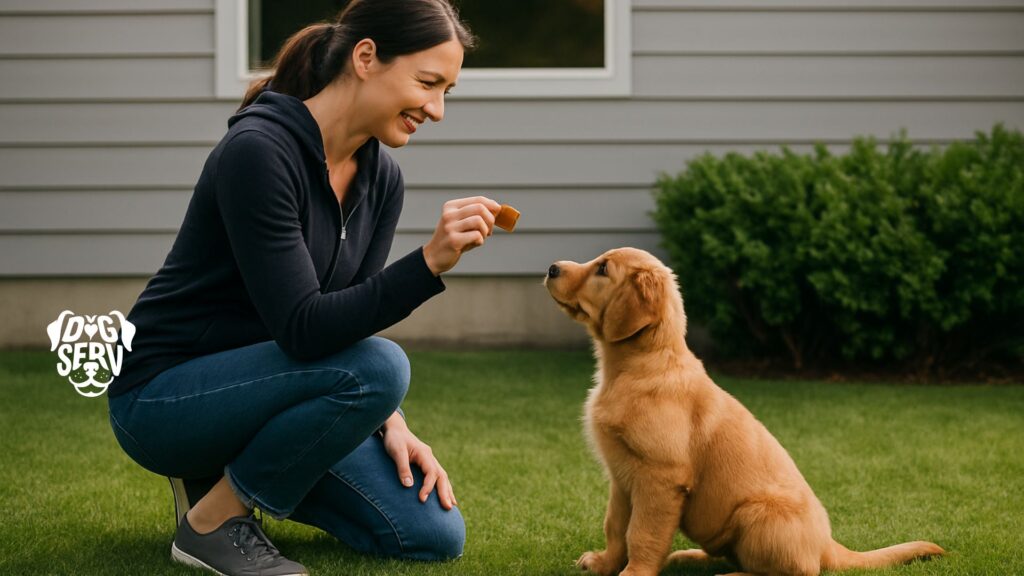
Leash Training and Walking Manners
Teaching your dog to walk politely on a leash starts with indoor practice and gradually progresses to outdoor adventures as skills develop and distractions increase. Practice short leash-walking sessions indoors or in the yard before venturing out into more stimulating environments where your dog’s attention will be divided between you and interesting sights, sounds, and smells. Loose-leash walking creates more enjoyable outings for both of you while ensuring safety in various situations from busy sidewalks to crowded parks. The foundation you build at home through consistent practice and positive reinforcement carries over to outdoor walks, making every adventure more pleasant and controlled.
Progressive Leash Training Techniques
Begin leash training by simply attaching the leash and allowing your dog to wear it around the house for short periods, rewarding calm behavior and movement without pulling or fighting the restriction. Practice walking a few steps inside while encouraging your dog to stay near your side with treats and praise, gradually increasing the distance as they learn to move with you rather than against the leash. When your dog pulls ahead, stop moving forward and wait for them to return attention to you before continuing, teaching that pulling slows progress rather than speeding it up. Once indoor skills are solid, progress to quiet outdoor areas like empty parking lots or calm residential streets before attempting busier environments with more distractions.
Socialization and Behavioral Development
Early and ongoing socialization helps your dog develop confidence and appropriate responses to new people, animals, environments, and experiences throughout their life. Safe, positive exposure to various stimuli during puppyhood creates well-adjusted adults, but older dogs can also benefit from gradual introduction to new experiences when approached thoughtfully. Building positive associations with new experiences while maintaining your dog’s comfort level prevents fear-based reactions that can create long-term behavioral challenges. The goal is to create a confident, adaptable dog who can handle life’s surprises with calm curiosity rather than anxiety or aggression.
Safe Exposure and Positive Associations
Introduce new experiences gradually while pairing them with good things like treats, play, or attention to build positive emotional responses. Start with mild versions of potentially challenging situations, such as distant sounds of traffic before walking near busy roads, or brief interactions with calm, friendly dogs before attending crowded dog parks. Watch your dog’s body language during new experiences, backing away if they show signs of stress or fear, and allowing them to approach novel situations at their own pace. Create positive first impressions by keeping initial exposures short and successful, building confidence through repeated positive experiences rather than overwhelming your dog with too much too quickly.
Mental Stimulation and Enrichment Activities
Keeping your dog’s mind engaged through training games, puzzle toys, and structured activities prevents boredom-related destructive behaviors while strengthening your training relationship. Mental exercise can be as tiring as physical activity for dogs, making training sessions valuable outlets for energy that might otherwise be directed toward furniture, shoes, or other household items. Interactive activities that combine training with play create positive associations with learning while providing the mental challenge that intelligent dogs need for emotional well-being. Regular mental stimulation through varied training exercises keeps your dog engaged with you as their primary source of interesting activities and rewards.
Training Games and Brain Exercises
Transform basic commands into engaging games by hiding treats around the house and using “find it” commands, or practicing recalls between family members in different rooms for an indoor game of hide and seek. Set up simple obstacle courses using household items like chairs to walk around, blankets to crawl under, or pillows to step over, rewarding your dog for following your guidance through the course. Practice “wait” or “stay” commands during meal preparation, gradually increasing the duration and adding mild distractions to build impulse control while making daily routines into training opportunities. Use puzzle toys and treat-dispensing devices during times when you need your dog occupied, providing mental stimulation that rewards problem-solving and persistence.
Common Training Mistakes to Avoid
Many well-intentioned owners accidentally slow their dog’s progress by inadvertently rewarding unwanted behaviors, such as giving attention when dogs bark for play or leaving tempting items within reach. Inconsistent commands, delayed rewards, and training during emotional moments create confusion that undermines the clear communication necessary for effective learning. Rushing progress expectations often leads to frustration for both dog and owner, while repeating commands multiple times teaches dogs they can ignore initial requests. Never punish a dog for coming to you, even if they misbehaved beforehand, as this destroys the reliability of recall commands that could save your dog’s life in dangerous situations.
Building Training into Daily Life
Incorporating training opportunities into regular routines like meals, walks, playtime, and daily interactions creates continuous reinforcement without requiring separate training sessions. Ask for a “sit” before placing the food bowl, practice “wait” at doorways, and reward calm greetings when you come home to turn everyday moments into learning opportunities. Spontaneously reward dogs for behaving well rather than only focusing on correcting mistakes, encouraging them to actively seek ways to please you throughout the day. Use regular activities like putting on the leash, opening doors, or preparing treats as chances to practice basic commands, making training a natural part of your dog’s daily routine rather than a separate obligation.
Frequently Asked Questions About Dog Training at Home
Q: How long does it take to see results with home dog training?
A: Most dogs show noticeable improvement within 1-2 weeks of consistent positive reinforcement training, though complex behaviors may take several weeks to become reliable. Progress depends on your dog’s age, previous experience, and how consistently you practice, but even small improvements in the first few days indicate you’re on the right track.
Q: What if my dog doesn’t respond to treat rewards during training?
A: Some dogs are motivated by food, others by play or attention, so experiment with different motivators like favorite toys, praise, petting, or life rewards such as access to walks or playtime. Try training before meals when your dog may be more food-motivated, or use higher-value treats like small pieces of chicken or cheese.
Q: Can I successfully train an older dog at home?
A: Yes, dogs of all ages can learn new behaviors with patience and appropriate positive training methods. While older dogs may take slightly longer to change established habits, they often have better attention spans than puppies and can focus on training sessions more effectively once they understand the routine.
Q: How do I handle accidents during housebreaking?
A: Clean thoroughly without punishment while increasing supervision and providing more frequent outdoor opportunities. Use enzymatic cleaners to completely eliminate odors that might attract your dog back to the same spot, and focus on rewarding successful outdoor elimination rather than reacting to indoor mistakes.
Q: What’s the difference between training sessions and daily reinforcement?
A: Formal training sessions focus on teaching new skills or practicing specific commands in a structured environment, while daily reinforcement maintains and strengthens learned behaviors throughout regular activities. Both are important for creating reliable responses and building a well-trained companion.
Q: How often should I train my dog at home?
A: Short, frequent sessions of 5-10 minutes several times daily work better than long, infrequent training periods. Most dogs benefit from 2-3 brief formal sessions plus ongoing reinforcement during daily activities like meals, walks, and playtime.
Final Thoughts
The journey from chaos to harmony with your dog begins with understanding that effective training at home combines science-backed methods with patience, consistency, and genuine care for your furry family member. Research consistently shows that positive reinforcement methods create faster learning and stronger bonds than punishment-based approaches, making every training session an opportunity to build trust while teaching valuable life skills. Your home provides the perfect environment for this transformation, offering controlled conditions where you can set your dog up for success while gradually building the foundation that will serve you both throughout your years together.
Success in dog training isn’t measured by perfection but by progress, and even small improvements in communication and behavior create meaningful changes in your daily life together. The investment you make in consistent, positive training methods pays dividends in reduced stress, increased enjoyment of your relationship, and the deep satisfaction that comes from effective communication with your canine companion. Every moment you spend building these skills strengthens the bond that makes dog ownership such a rewarding experience.
Ready to start your training journey with expert guidance and support?
DogServ understands the challenges and joys of building a strong relationship with your dog through effective training methods. Our comprehensive resources, honest product reviews, and expert advice can help you make the best decisions for your unique situation, whether you’re working with an energetic puppy or helping an older dog learn new skills.
Join thousands of dog owners who trust DogServ for reliable training guidance, product recommendations, and ongoing support throughout every stage of their dog’s life.
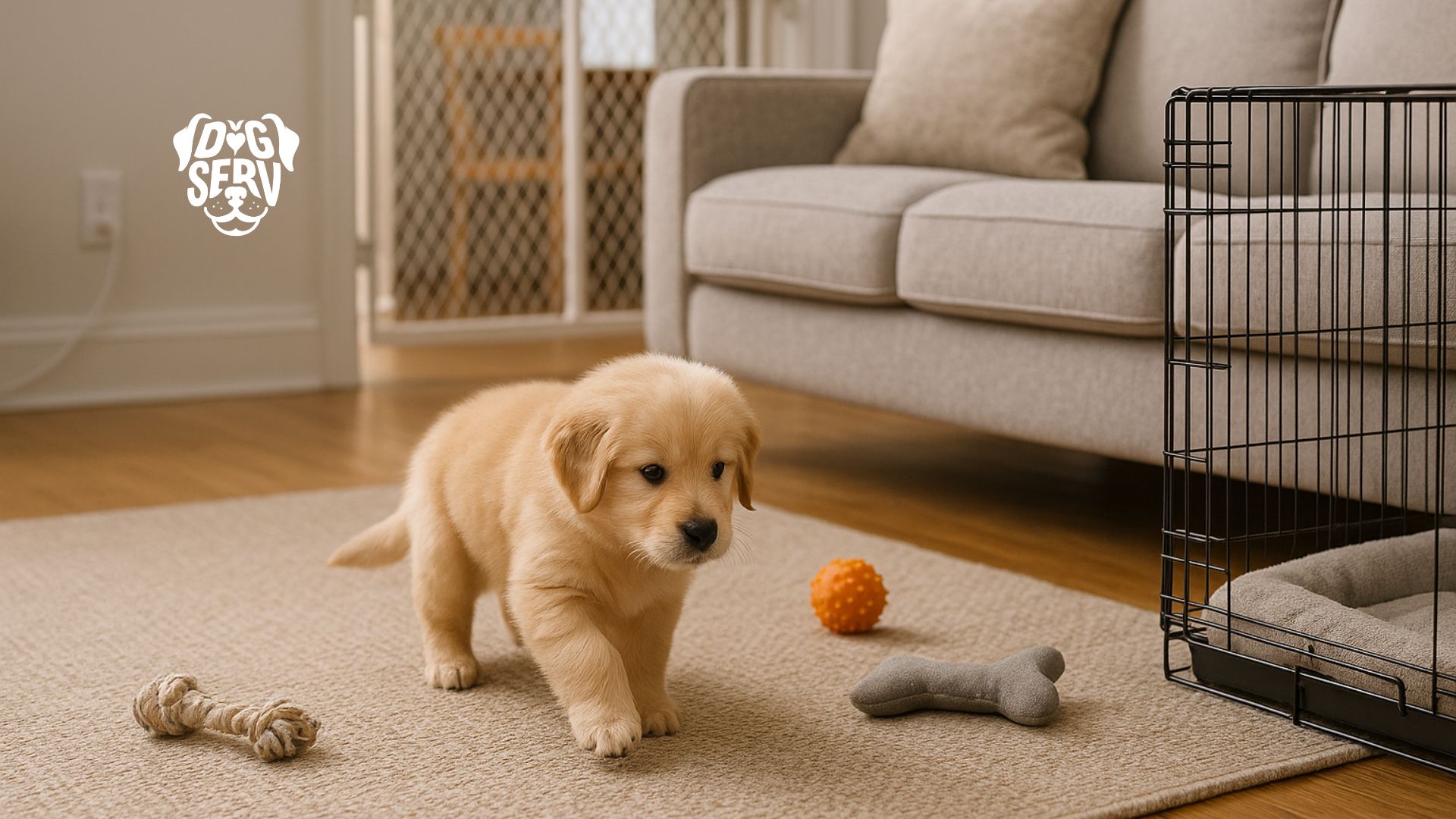
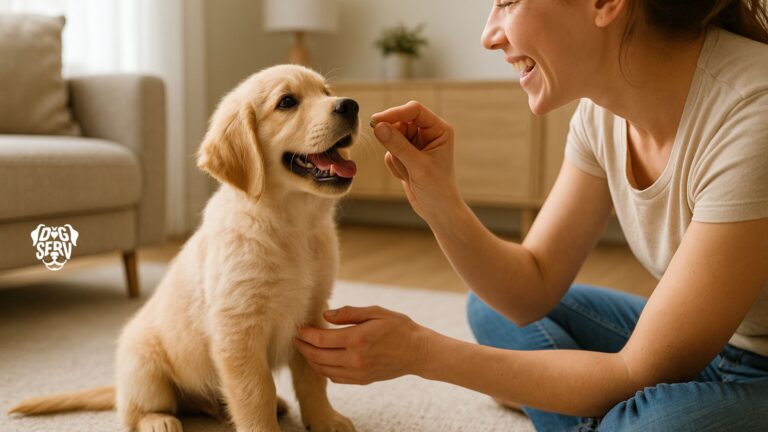
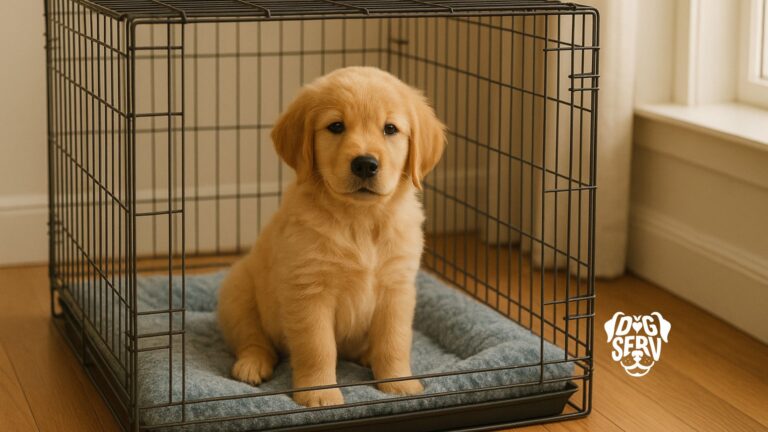
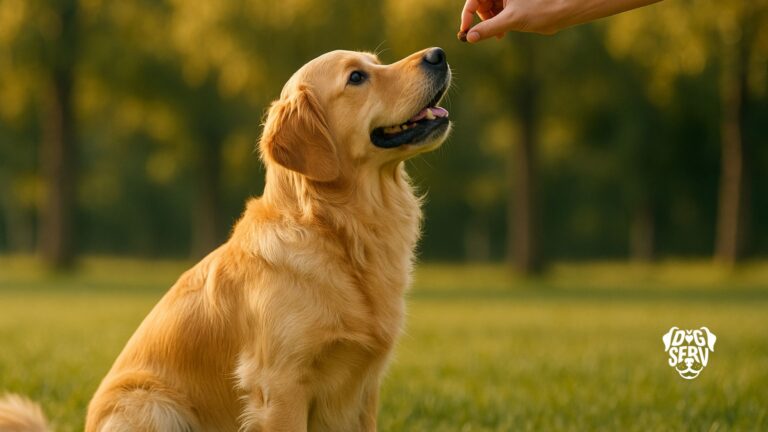
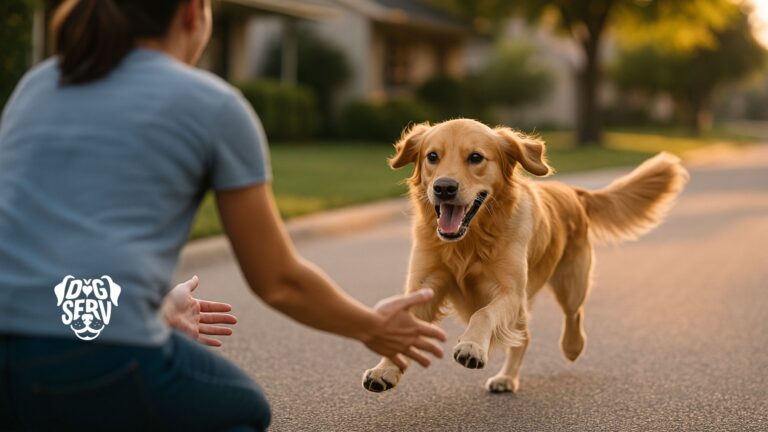
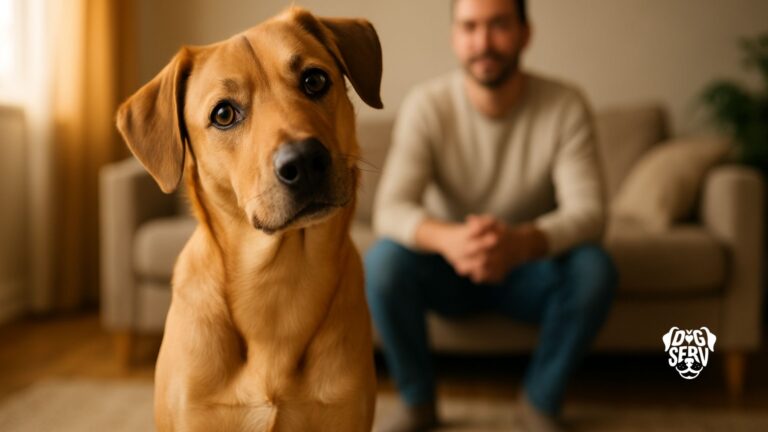
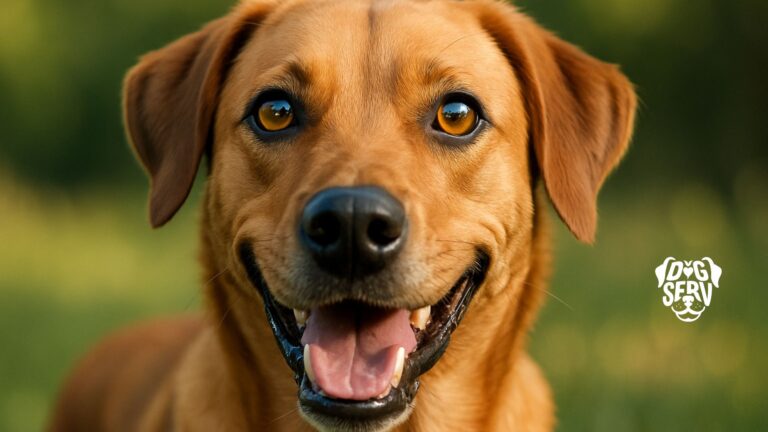
Calvin Hewitt is the primary author and driving force behind DogServ, bringing over 27 years of business expertise and 7 years of specialized digital marketing experience to the dog service industry. As the founder of Web Leveling and architect of DogServ’s evolution from a simple directory to a comprehensive one-stop shop for dog lovers, Calvin has created highly performing dog training websites in competitive markets, developed popular applications like “Can My Dog Eat?” and “Puppy Planning Checklist,” and generated thousands of monthly page views with his dog service content. Based in the Houston area but serving dog lovers and service providers nationally and internationally, Calvin works alongside a dedicated team of seven professionals, combining analytical rigor from his banking and energy industry background with a genuine passion for connecting dog owners, dog lovers, and service providers through quality content, innovative applications, and trusted recommendations.